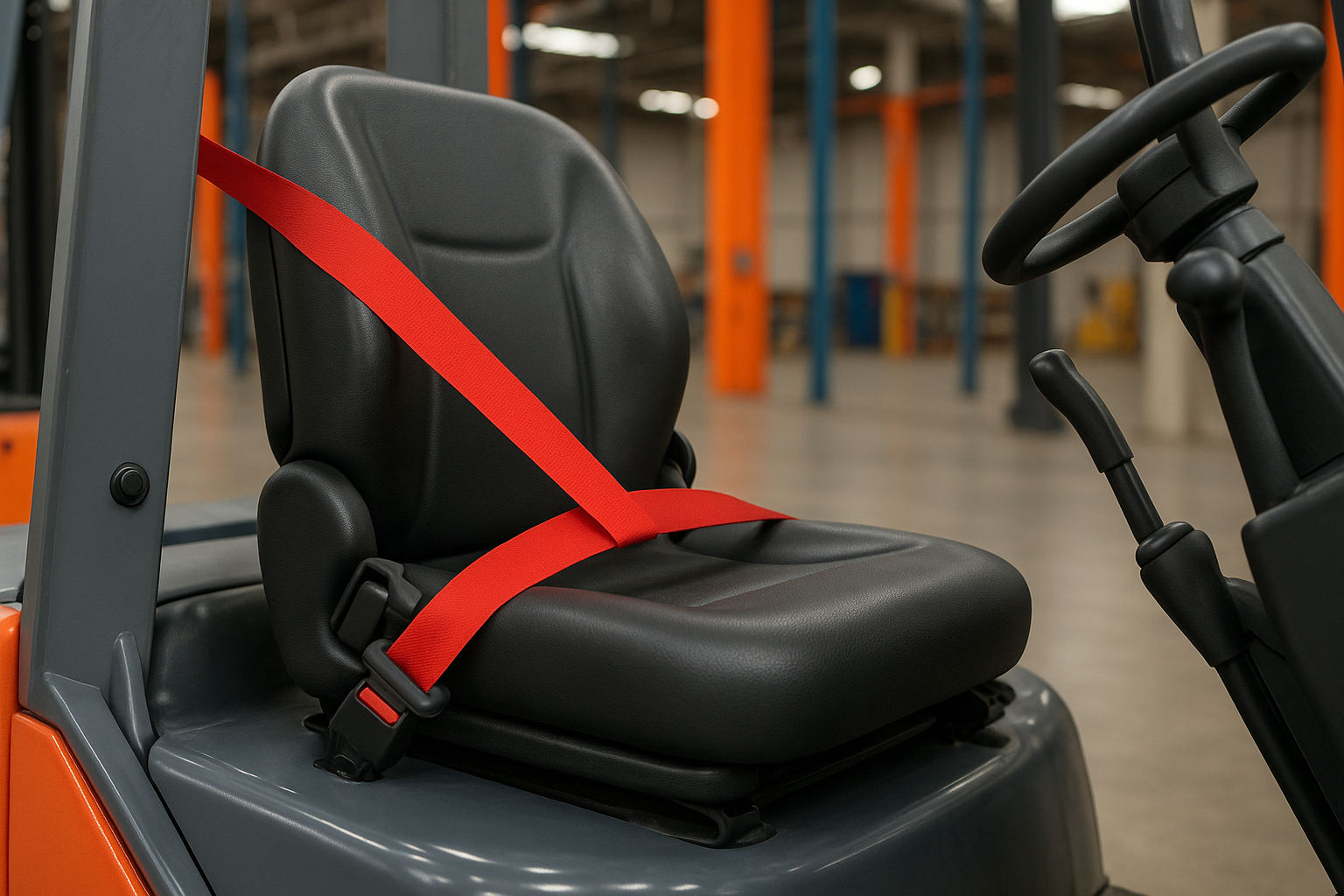Red Seat Belts on Forklifts: What OSHA Really Expects From Your Workplace

If you manage a warehouse or industrial facility, you’ve probably heard a dozen different opinions about what OSHA wants when it comes to forklift seat belts.
There’s a Lot of Confusion About Forklift Seat Belt Rules
Some say OSHA requires interlocks.
Some say OSHA requires specific belt types.
Some say OSHA requires red belts now.
None of that is true.
Here’s what OSHA really cares about:
Forklift operators must wear their seat belts. Every time. No exceptions.
The color?
The style?
The length?
The visibility?
OSHA doesn’t regulate any of that.
But red belts make compliance much easier—which is why more companies are switching.
Let’s break down what OSHA actually says and how red belts help you hit the mark.
What OSHA Actually Requires for Forklift Seat Belts
OSHA’s rule comes from 29 CFR 1910.178.
It doesn’t mention seat belt color or style.
It focuses on use.
OSHA expects:
• The seat belt to function properly
• The operator to buckle it
• The employer to enforce the rule
• Supervisors to monitor compliance
• Violations to be corrected immediately
That’s it.
Color is never mentioned.
But here’s the truth: OSHA’s biggest frustration is that operators pretend to buckle up—or skip it entirely. Red belts solve that problem fast.
Why Many Warehouses Switch to Red Seat Belts Anyway
Even though OSHA doesn’t require red belts, companies choose them because they fix common safety challenges.
1. Supervisors Can Spot Non-Compliance Faster
Black belts disappear in every industrial environment:
• Black uniforms
• Safety vests
• Jacket liners
• Dirt and dust
• Poor lighting
• Forklift shadows
• Camera footage
Red belts stand out like a warning flare.
That makes it easy for supervisors to:
• Walk the floor
• Look into the cab
• Check from across the aisle
• Confirm on warehouse cameras
No delays.
No guesswork.
No confrontations.
Start your red belt upgrade here:
https://www.myairbags.com/product/red-colors-seat-belt-webbing-replacement/
2. Red Belts Stop “Fake Buckling”
Every safety manager has seen these tricks:
• Buckling behind the seat
• Tucking the belt under the leg
• Resting it on the lap but not clicking
• Wearing a jacket over the belt
• Sitting on top of the belt
Red webbing makes these obvious.
The belt has to be visible.
The click has to happen.
There’s no hiding it.
3. It Helps With OSHA Inspections
During an OSHA walk-through, it’s not enough to say:
“Everyone here wears seat belts.”
You need to show it.
Red belts make it clear from 20 feet away that your operators are buckled.
Inspectors appreciate that level of visibility and control.
It shows you take your safety program seriously.
4. Red Belts Help With Dash Cams and Safety Cameras
Black belts don’t show up on video.
Red belts do.
This helps you:
• Investigate incidents
• Coach unsafe behavior
• Confirm buckle use in training footage
• Handle claims with better evidence
This is a major reason logistics and warehousing companies are switching.
So… Does OSHA Require Red Seat Belts?
No.
OSHA requires belt use, not belt color.
But red belts make OSHA compliance easier to enforce because supervisors can verify buckle use instantly.
Think of red belts as a tool—not a rule.
How Companies Upgrade Their Forklifts to Red Belts
You don’t replace the entire belt assembly.
That’s expensive and often unnecessary.
Most companies do rewebbing, where the original hardware stays in place and the belt material is replaced with new red webbing.
It’s:
• Cheaper
• Faster
• OEM-quality
• Works on any forklift model
• Keeps your mounting hardware intact
• Takes only a few minutes to remove and reinstall
MyAirbags handles all the rewebbing so you get belts that look new and last.
Make Seat Belt Compliance Easier With Red Forklift Belts
If you struggle with seat belt enforcement—or you want to make OSHA inspections smoother—red belts are one of the cheapest and most effective upgrades you can make.
Start your red belt upgrade here:
https://www.myairbags.com/product/red-colors-seat-belt-webbing-replacement/

 myairbags.com
myairbags.com 888-779-9029
888-779-9029

